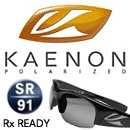
|
|
|
Scuttlebutt News: The Appeals Book for 2009-2012
Comments Dave Perry, Chairman of the US SAILING Appeals Committee, “We have just published the hard-copy of the Appeals Book, which is the soonest this has been accomplished, and I am working my darndest to get more people to realize the Book exists and to read it or refer to it. It can only help clear up gray areas for everyone.” Here are four actual appeals to provide a first-hand look at what is in the Book: QUESTION 101 Interpretation Requested by the Corinthian Sailing Club Rule 28.1, Sailing the Course Rule 64.1(c), Decisions: Penalties and Exoneration A right-of-way boat compelled by a keep-clear boat to cross the starting line early is not relieved of her obligation to start as described in the definition Start. Assumed Facts Five seconds before the start of the race, S and P converged close to the starting line. P luffed and passed head to wind in front of S. Before P came to a close-hauled course, S luffed in order to avoid a collision and, by doing so, crossed the starting line to the course side of the line. At the starting signal, both boats were clearly on the course side of the starting line. S hailed “Protest” and displayed a red flag. P bore off around the starting mark, returned completely to the pre-start side of the starting line, and then crossed it. S sailed the course without returning to the pre-start side of the starting line. The race committee scored S OCS. After the race P retired in acknowledgement of her breach of rule 13. S protested P, claiming she had been forced over the starting line because of P’s breach of rule 13. The protest committee found that P broke rule 13, but did not penalize her because she had already taken a penalty. It then exonerated S under rule 64.1(c), deciding she had been compelled to break rule 28.1 because of P’s breach, and reinstated her in her finishing place. Question Was S compelled to break rule 28.1 and therefore correctly exonerated under rule 64.1(c)? Answer No. Rule 28.1 required S to ‘start’ as stated in the definition Start and permitted her to correct an error in starting before she finished. Nothing prevented her from returning to the pre-start side of the starting line and starting correctly. Therefore she was not ‘compelled’ to break rule 28.1, as the term is used in rule 64.1(c). Since S did not start correctly, she is to be scored OCS. January 2009 back to top QUESTION 93 Interpretation Requested by the San Diego Yacht Club Rule 41(c), Outside Help Rule 41(d), Outside Help Rule 86.1(b), Changes to the Racing Rules Rule 89.2(a), Notice of Race; Appointment of Race Officials Rule 90.2(a), Sailing Instructions Rule J1.2(1), Notice of Race Contents The term “information freely available” in rule 41(c) means information available without monetary cost and easily obtained by all boats in a race. “Easily obtained” means the information is available from public sources that competitors can reasonably be expected to be aware of and can locate with little effort. The term “information freely available” refers only to the information, not to equipment or software needed to receive or read the information. Question 1 In rule 41(c), what does “information freely available” mean? Answer 1 The term “information freely available” in rule 41(c) means information available without monetary cost and easily obtained by all boats in a race. “Easily obtained” means the information is available from public sources that competitors can reasonably be expected to be aware of and can locate with little effort. An example is information on the National Weather Service (NOAA) website and its radio stations. Information for which a fee has been paid or that is not easily obtained by all boats in a race is not “freely available.” Examples are information supplied only to those boats that have paid a subscription or other fee, and information whose source is obscure. The term “information freely available” refers only to the information, not to equipment or software needed to receive or read the information. A fee paid to connect to a network that is free and publicly available, such as the Internet, is not a fee paid for the information available there. Similarly, the cost of a computer or software used to connect to or search the Internet is not a cost of the information obtained by those means. However, if the access to the information, including any equipment or software, is provided for a fee by the same person or entity that provides the information, then the information has a monetary cost and is not “freely available.” Examples are satellite radio companies and ocean routing services when they have charged the recipient of the information a subscription fee for accessing their channels or files. Question 2 In rule 41(d), can the term “disinterested source” be interpreted using the definition Interested Party? Answer 2 No. A disinterested source is one that is completely impartial concerning the outcome of the race. Question 3 In rule 41(d), does the term “unsolicited” refer to the act of requesting information or of marketing the information? Answer 3 The term “unsolicited” means not requested by the recipient. Question 4 Can an organizing authority restrict the information that can be received by a boat without modifying rule 41? Answer 4 No. An organizing authority cannot change any rule, including rule 41. The sailing instructions, which are published by the race committee under rule 90.2(a), can change rules in compliance with rule 86.1(b). If the sailing instructions will change rule 41, the notice of race, which is published by the organizing authority under rule 89.2(a), must identify the rule as required by rule J1.2(1). Changes to rule 41 that permit the receipt of otherwise prohibited information or restrict the information that can be received by a boat while racing would certainly help competitors decide whether to attend the event or convey information competitors will need before the sailing instructions become available (see rule J1.2). February 2007 back to top APPEAL 63 Boomorang vs. Premature Acceleration Rule 63.3(a), Hearings: Right to Be Present Rule 63.6, Hearings: Taking Evidence and Finding Facts If the protest committee accepts written testimony from witnesses who are not available to be questioned, or fails to exclude witnesses except when they are giving their own testimony, the hearing is invalid. Facts and Decision of the Protest Committee Boomorang believed that she saw Premature Acceleration touch a mark while racing and protested. The protest committee disqualified Premature Acceleration for breaking rule 31 (Touching a Mark). She appealed, claiming that the protest committee had made several procedural errors, including accepting written testimony from witnesses not present and failing to exclude witnesses except when giving evidence, and that the hearing was therefore invalid. Decision of the Appeals Committee Replies from the protest committee to the appeals committee’s questions under rule F5 (Inadequate Facts; Reopening) show that the protest committee erred in its conduct of the hearing. First, it accepted written testimony from two witnesses who were not present, and therefore not available to be questioned. Rule 63.6 gives the parties to the hearing the right to question any person who gives evidence. Second, the committee allowed witnesses to remain in the hearing room throughout the hearing, including the times when the parties and other witnesses were giving their evidence and being questioned. Rule 63.3(a) requires that witnesses be excluded from the hearing except while giving their own evidence. Because of these errors, which were not correctable, the hearing was invalid. Premature Acceleration’s appeal is upheld. The decision of the protest committee is reversed, and Premature Acceleration is reinstated in her finishing place. April 1993 back to top APPEAL 82 E Scow V-751 vs. E Scow M-9 Rule 61.1(a), Protest Requirements: Informing the Protestee A boat is not obligated to give priority to displaying a protest flag at the cost of the crew failing to act to keep the boat under control or delaying a spinnaker set. Facts and Decision of the Protest Committee At the windward mark, E Scow M-9 tacked within the zone onto starboard tack below E Scow V-751, approaching the mark on starboard tack. As a result, V-751 had to sail above close-hauled and, in the same incident, M-9 hit the mark with her boom. V-751 hailed “Protest” within three to five seconds after M-9 hit the mark. The next leg was a short “offset” leg, set at approximately 110 degrees to the windward leg. Wind speed was 15-20 m.p.h. After passing the windward mark, V-751 sailed the offset leg with all crew members hiking to windward to prevent the boat from capsizing. She then bore away around the offset mark, set her spinnaker and displayed her protest flag. The flag was displayed within 12-20 seconds after M-9 hit the windward mark. The protest committee upheld the protest and disqualified M-9 for breaking rule 18.3(a) (Tacking When Approaching a Mark), and rule 31 (Touching a Mark). M-9 appealed, claiming that V-751 did not hail or display her protest flag in sufficient time. Decision of the Appeals Committee This appeal is concerned with whether or not V-751 hailed “Protest” and displayed her protest flag at the first reasonable opportunity for each, as required by rule 61.1(a). The protest committee found that V-751 hailed within three to five seconds after M-9 hit the mark. Three to five seconds was short enough to justify the conclusion that the hail was made at the first reasonable opportunity after the incident. The protest committee also found that V-751 displayed her protest flag between 12 and 20 seconds after M-9’s boom hit the mark. The committee concluded that “reasonable opportunity” in this case was determined in part by the need for all crew members to hike to windward to keep the boat under control and to hoist and set the spinnaker. We agree with the protest committee’s view that a boat is not obligated to give priority to displaying a protest flag at the cost of the crew failing to act to keep the boat under control or delaying a spinnaker set. For these reasons, M-9’s appeal is denied. The protest committee’s decision is upheld, and M-9 remains disqualified. April, 2002 back to top |







|


